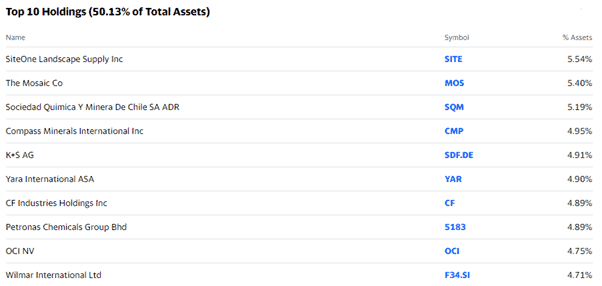Despite the rise of exchange-traded funds, Potash ETF may not be the most popular category among this type of investment. ETF investing hit record inflows in 2020, and it has kept increasing throughout this year, although there is only one EFT that tracks potash as an index.
Investments into ETFs surpassed the US$41 billion mark in 2020. According to Mackenzie Investments, one of the reasons for the ETF investment boom is investors’ concern with the overheating of the economy due to the COVID-19 pandemic, and as a consequence, the increase in inflation.
While some investors look for ETFs to achieve defensive positions in their portfolio, those looking for funds with a potash index available can only find a single option. An option, alas, that does not include all potash companies in the market.
How an ETF works
An ETF is a type of security that can be designed to track an investment strategy, such as an index, commodity, or other asset. Investing in this type of fund is almost the same as investing in all the index’s holding companies within a certain category, with proportional weight assigned to the companies’ representation in the index.
Thus, investors do not generally make money depending on who buys or sells the shares of a particular company. Earnings follow the tracking of the index, which increases and decreases depending on the behavior of all the index companies’ shares on the stock exchange.
ETFs are an instrument that makes it possible to raise funds from many investors and apply them to bonds—with a trading advantage similar to stocks on the stock exchange. Because of this, ETFs tend to be more liquid than mutual funds. Another difference of note is that ETFs usually have lower fees.
ETF investing can be considered a conservative investment approach as the money invested is diluted among the ETF index’s holding companies.
What about potash ETF?
Currently, there is only one ETF that tracks potash as an index: The Global X Fertilizer / Potash ETF, under the ticker SOIL. It is part of the Global X ETFs provider, based in New York. This fund tracks the performance of the largest and most liquid globally listed companies that are active in some aspect of the fertilizer industry.
SOIL’s net assets are US$7.37 million so far, and the top 10 holding companies of SOIL, accounting for the percentage of assets, are:
*Source: Yahoo! Finance
Other relevant potash companies
There are publicly traded potash companies that are not in the top 10 of SOIL, although they are significant market players. This includes Verde AgriTech PLC and Nutrien, both listed in Canada.
Verde AgriTech is an agricultural technology company that develops and produces fertilizers. Rooting their solutions in nature, they make agriculture healthier, more productive, and more profitable for farmers. They work to improve the health of all people and the planet.
Verde is a TSX-listed company under the ticker NPK. The company has achieved a 62% of gross margin in 2020, and CAGR of 186% based on yearly total sales volume in tonnes from 2018 to 2020. Verde’s NPV is US$1.99 billion, at an 8% discount rate with an Internal Rate of Return of 287% based on the Pre-Feasibility Study filed on SEDAR in 2017.
Canada is the world’s largest producer and exporter of potash, and they also have the biggest potash reserves in the world. Canadian production of potash reaches 31.6% of the world’s total production. There is, however, no Canadian potash ETF listed on the Toronto Stock Exchange.
In 2021, Canada has achieved US$25 billion of inflows in listed ETFs so far. ETFs with a focus on environmental social governance (ESG) already hit a record reaching US$3.3 billion, compared to US$1.8 billion in 2020.
The potash market seems under-explored by ETFs—but some potash companies may deserve attention from capital markets globally.
Learn more about potash investing


